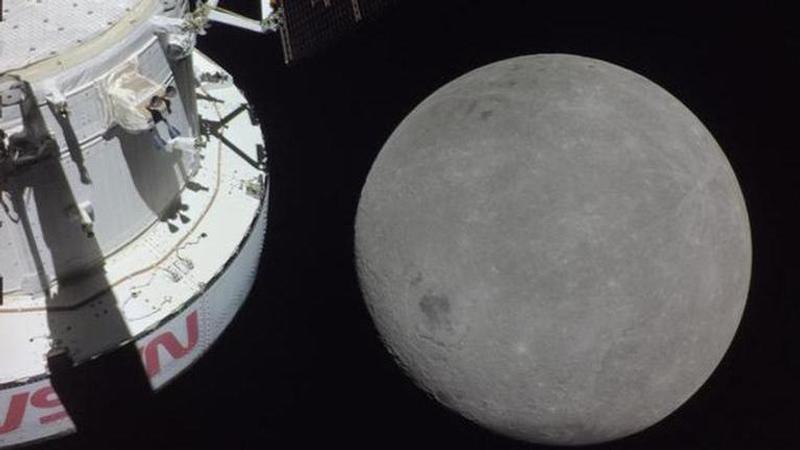Published 18:04 IST, November 22nd 2022
Artemis 1: Orion saw the Apollo 11 site where NASA's Neil Armstrong landed in 1969
The Orion spacecraft is six days into the uncrewed Artemis 1 mission which launched from NASA's Kennedy Space Centre on November 16.

The Orion spacecraft is six days into the uncrewed Artemis 1 mission which launched from NASA's Kennedy Space Centre on November 16. On its fifth day, the mission teams conducted an outbound powered flyby wherein they fired Orion's thrusters to direct toward the distant retrograde orbit (DRO).
In this process, the spacecraft came as close as 130 km from the Moon's surface and flew over several landing sites of the Apollo missions including Apollo 11, humanity's first lunar landing mission over fifty years ago.
During the live commentary from the November 21 flyby, it was revealed that Orion passed the Tranquility Base area where Neil Armstrong and Buzz Aldrin touched down for the first time on July 20, 1969.
According to NASA, Orion was roughly 2,253 km above the Moon's surface when it crossed the Tranquility Base at 6:07 pm IST whereas it was over 9,600 km and over 12,300 km when it flew over Apollo 14 and Apollo 12 landing sites, respectively. The imagery, however, was not available since the signal from Orion was lost as it was behind the Moon while making its closest approach. Although we might be lucky on December 5 as the spacecraft will again fly over these locations which would be on the Earth-facing side.
What's next?
Mike Sarafin, Artemis I mission manager, said in a briefing after the flyby that Artemis 1 is proceeding exactly as planned. "The ground systems, our operations teams, and the Orion spacecraft continue to exceed expectations, and we continue to learn along the way about this new, deep-space spacecraft", he added. Ahead of the flyby on November 21, the mission teams executed several burns by firing Orion's thrusters to correct its trajectory around the Moon. NASA says that it was one of the two-part maneuvers required to insert Orion into the DRO.
The DRO is the path around the Moon which is named 'distant' owing to its high altitude from the lunar surface and 'retrograde' because a spacecraft in this path travels around the Moon in a direction opposite to the Moon's orbit around the Earth. It was chosen because it provides a stable orbit and is the perfect zone to test Orion's capabilities in the extreme space environment.
On November 25, NASA will execute the second and final maneuver - the distant retrograde orbit insertion burn-- before Orion enters the DRO. According to NASA, Orion will travel over 90,000 km beyond the Moon before it swings using the Moon's gravity toward the Earth for a splash down into the Pacific Ocean on December 11. Interestingly, Orion will be more than 4,32,000 km from Earth on November 28, breaking the record for the farthest distance traveled by a human-rated spacecraft set during the Apollo 14 mission.
Updated 18:04 IST, November 22nd 2022



